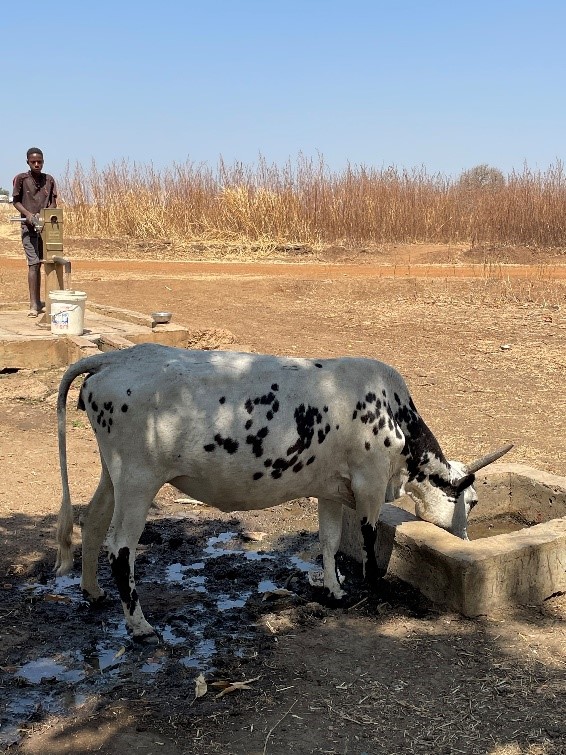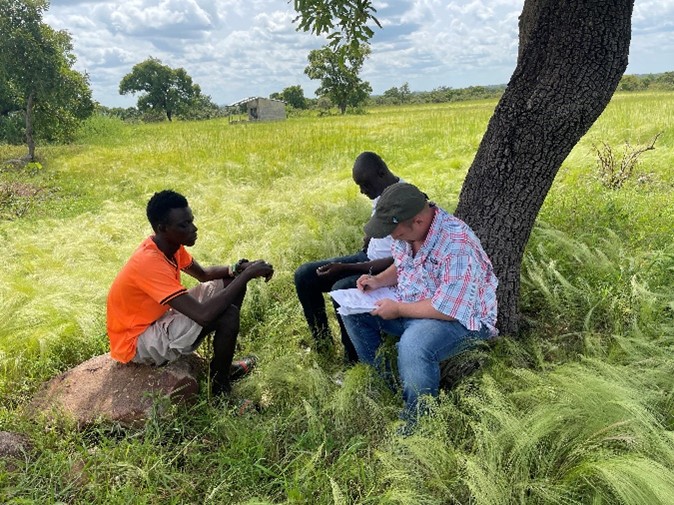In Ghana, it is estimated that 17% of rural households rely on piped-borne water as their main water supply. Those without access to piped water rely on water sources such as communal boreholes, rivers, and unprotected wells for multiple livelihood activities or purposes. For instance, rural communities in Ghana may use a communal borehole to water their livestock and provide households with clean water for drinking, cooking, and cleaning.
In addition, water from these communal sources is shared between community households. Communities use the tradition of water sharing between households to keep them resilient during the long dry season and reinforce and inform how communities use water for multiple purposes.

In October 2022 and January 2023, I spent time with smallholder farmers in irrigating and non-irrigating communities in Northern Ghana. My visit aimed to understand how the water-sharing tradition between households informed how communities used water for multiple purposes.
In sitting down with community members in the irrigating and non-irrigating communities, households will first tell you that, above all else, “Water is life” and “is a gift from God.” Households will tell you they share water because “we are all one people.” This point is crucial as it highlights that water use in these communities is steeped in a rich tradition of community and partnership.
Secondly, you soon realize that a vibrant patchwork of local governance systems and structures, such as water user groups and committees, is used to manage the local water resources in irrigating and non-irrigating communities. There are user groups for surface water sources such as rivers and small dams and groundwater sources such as communal boreholes. Water user groups in these communities serve as a mechanism for decision-making, resolving disputes, and appealing to higher levels of government.
Yet, while there are similarities, there are also distinct differences between communities that can irrigate in the dry season and those that cannot. For instance, in this irrigating community, there existed one large dam and many communal boreholes. For multiple water use, the community used water from the dam for productive purposes, like dry season gardening, livestock, and cottage industry, such as shea butter processing, and used water from the boreholes for domestic purposes, such as drinking, cooking, and cleaning.
For the irrigating community, having multiple water sources for multiple uses across seasons meant that they could diversify their productive activities and spend less time and energy having to find clean water sources. As one irrigator noted, “we now worry less about having enough water in the dry season and now have more resources to invest back into our household and community.”
In contrast, the non-irrigating community did not have a surface water source they could rely on for productive activities. Therefore, they had to rely on community boreholes and a shallow river that dries up when the rains stopped. In this community, there were no livestock and little to no productive activities beyond the rainy season. Unlike the irrigating community, the non-irrigators had fewer livelihood options and faced increased pressure on their groundwater resources.
For non-irrigators, the lack of sustainable water sources in the dry season saw the community have fewer productive opportunities and found households investing more energy and time searching for a clean water source.

The empirical literature will tell you that to support irrigating and non-irrigating communities using water for multiple purposes, a top-down, policy-heavy approach to developing and scaling multiple-use water services and systems for rural communities is needed.
Based on my time in the field, a top-down approach would be counterintuitive. Instead, interventions around multiple water use should take a bottom-up approach and start by working with communities to develop targeted solutions that fit their local situation, customs, and traditions. Revaluing the approach to multiple water use would create opportunities that support those for whom public policies consistently fail and are the most vulnerable to climate shocks and stress.


